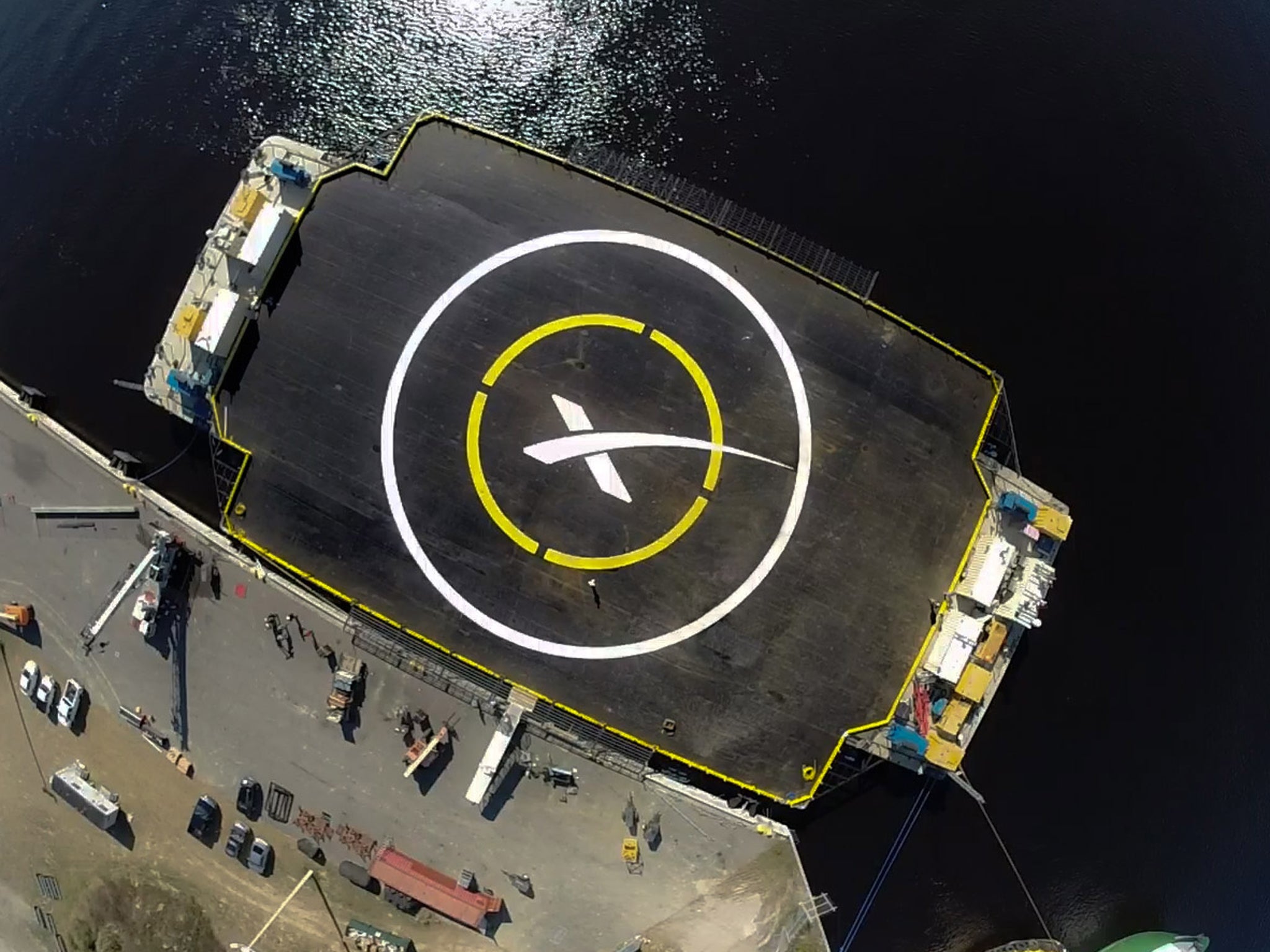SpaceX to try and land a rocket on a barge, but mission likely to go wrong
There’s a “certain likelihood” that something will go wrong with the mission, SpaceX says, and CEO Elon Musk predicts less than 50% chance of success

SpaceX is going to land a rocket on a barge in the Atlantic. The Falcon rocket will first head up to space to re-stock the International Space Station — but that exciting mission will be far less interesting than what it does when it comes back down.
The rocket was scheduled for launch at 11.20 this morning, but has been postponed after a problem.
Minutes after Tuesday morning's planned launch from Cape Canaveral, the first stage of the unmanned Falcon rocket will aim for a vertical test landing on a barge in the Atlantic. The 14-story booster will soar close to 150 miles high, before flying back down and attempting to settle upright on the floating platform — close to the size of a football field.
The mission will be streamed live on a webcast run by the company.
"When you look at it on the ground, I think it's probably a very, very big platform, a big spaceport," Hans Koenigsmann, vice president for mission assurance at SpaceX, said Monday on the eve of launch. "But if you look at it from, I think, almost 150 or so miles up in suborbit, then it looks like a very, very small place to land on."
"I'm going to be super-excited if this works," Koenigsmann noted. But he stressed that he did not want anyone losing sight of the main purpose of the Falcon's mission: to deliver critical supplies to the space station and its six inhabitants.
This will be the sixth flight of a supply-filled Dragon capsule to the orbiting lab. It's loaded more than usual because of an October launch explosion that wiped out another company's delivery effort in October; this Dragon is stuffed with more than 5,000 pounds of goods, much of it replacing items lost on the Orbital Sciences flight.
As for the landing experiment, once the first-stage booster has completed its primary job of hoisting Dragon, it's entirely a SpaceX operation.
The California-based company has attempted two such landings before on the open sea, both of them successful, but never on a platform like this. Normally, the boosters are discarded at sea.
SpaceX founder and chief Elon Musk predicts a 50-50 chance of success at best. He maintains that flying back boosters would allow them to be reused, speed up launches and save money. The ultimate goal, in years to come, is achieving a near aircraft-like operation.
"There's a certain likelihood that this will not work out right, that something will go wrong," Koenigsmann told reporters. "Nobody has ever tried that to our knowledge."
The platform — called a drone — was described by Koenigsmann as stable even in high waves and wind. As of Monday, it was already stationed a couple hundred miles off the coast of northeastern Florida, the target touchdown spot.
On its website, SpaceX described the effort to stabilize the booster, traveling at nearly 1 mile per second, like "trying to balance a rubber broomstick on your hand in the middle of a wind storm." Automatic engine firings will control the descent — while big, the booster will be lightweight by this point — with touchdown occurring nine minutes after liftoff. It's doubtful flight controllers will have instant confirmation. No one will be on the platform. A ship withSpaceX crew, positioned at least 10 miles (16 kilometers) away, would assist with recovery.
Regardless of the outcome, the California-based company intends to try for more experimental landings on the barge and demonstrate safety before coming in for ground landings. Air Force staff will have the ability to destroy the first stage, as always, if it veers seriously off course, according to Koenigsmann.
NASA's previous delivery attempt, by Orbital Sciences, ended with the launch explosion just seconds after liftoff from Wallops Island, Virginia. Researchers who lost experiments in the accident — many of them children — hustled to get replacements on this flight. NASA also had to make sure necessary equipment for spacewalking and other crew activity was on board the Dragon, as well as extra food.
Additional reporting by Associated Press
Subscribe to Independent Premium to bookmark this article
Want to bookmark your favourite articles and stories to read or reference later? Start your Independent Premium subscription today.

Join our commenting forum
Join thought-provoking conversations, follow other Independent readers and see their replies
Comments